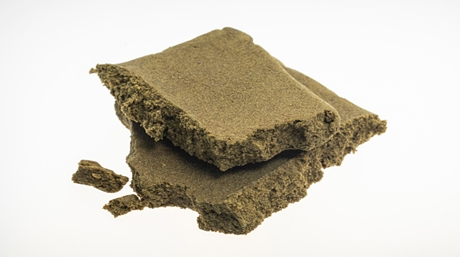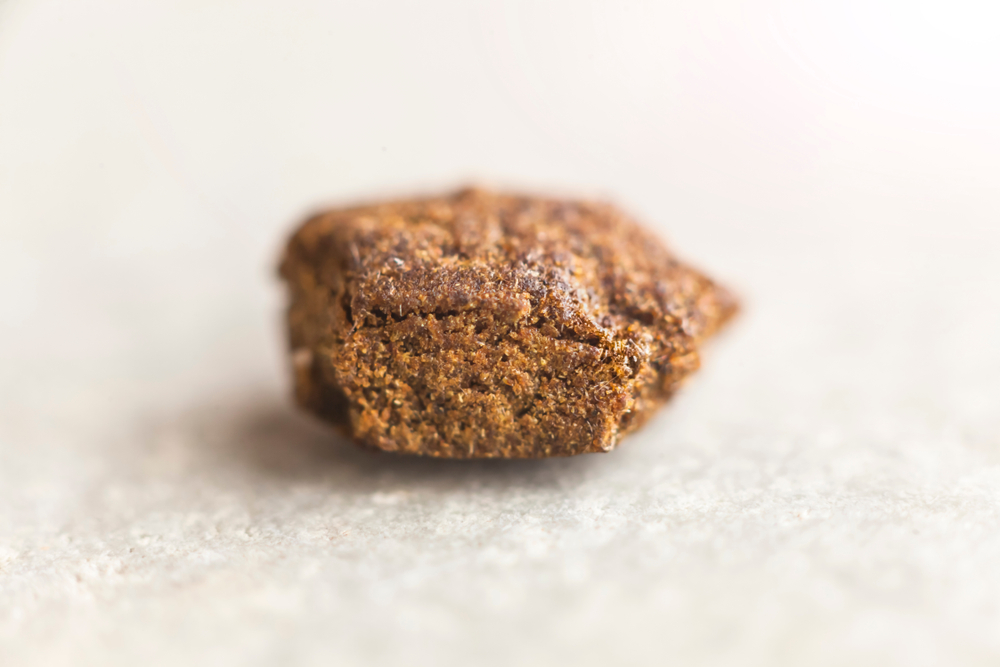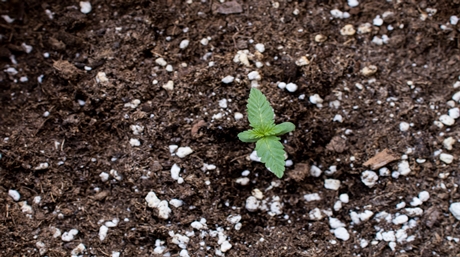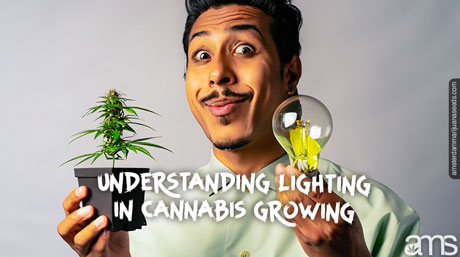General topics
My Journey to Mindful Relaxation
Published
2 years agoon
By
admin
In our rapidly advancing, modern society, finding a method to decompress and disconnect from the relentless flurry of daily stressors has become more than just an optional indulgence – it has evolved into an essential, survival-driven necessity. Be it the anxieties drawn from the professional realm, the pressures of maintaining personal relationships, or the never-ending stream of information and stimuli we are subjected to, the need to mentally ‘switch off’ for a while is undeniable. While some find their peaceful harbor in the pages of a riveting novel, a soothing glass of wine, or the adrenaline rush of a strenuous workout, I have discovered my personal haven in the subtly intoxicating, calming embrace of cannabis.
Smoking weed at the end of the day has morphed into more than just a habit or a means to seek temporary solace – it has become an integral part of my evening routine, a personal ritual infused with a sense of serenity and sacredness. This isn’t about an insatiable quest for a perpetual ‘high’ or an escape from reality. Instead, it’s about slowing down the ceaseless ticking of the clock, stepping out of the whirlwind of daily happenings, and granting myself the permission to rejuvenate, reflect, and simply be. It’s about indulging in that slow, deliberate act of lighting up, taking the first thoughtful drag, and feeling the day’s weight lifting off my shoulders, dissipating into the ether with each exhaled puff of smoke.

Understanding Cannabis: A Historical and Modern Perspective
Cannabis, often referred to as marijuana or weed, is a plant that has a rich tapestry of human use and interaction spanning thousands of years. Historically, it’s been utilized across diverse cultures for a myriad of purposes ranging from medicinal treatments to spiritual rituals, and for personal relaxation and recreational purposes. The use of cannabis as a therapeutic agent dates back to ancient civilizations like the Chinese and Egyptians who leveraged its healing properties to treat various ailments.
Despite its extensive historical usage, cannabis has trodden a somewhat controversial path, particularly in the 20th century, due to its psychoactive properties. Many societies stigmatized and criminalized its use, fueled by a lack of understanding and comprehensive research. However, the narrative surrounding cannabis has been shifting significantly over the past few decades. This shift can be attributed to an increasing body of scientific research that underscores its potential therapeutic benefits for a range of conditions from chronic pain to epilepsy, and even mental health disorders like anxiety and depression.
Delving into the science behind cannabis, it’s important to understand its key active components known as cannabinoids. These compounds interact with our body’s endocannabinoid system, a complex biological system that plays a critical role in regulating a variety of physiological and cognitive processes such as mood, pain sensation, appetite, and sleep.
Two of the most prominent cannabinoids that have been extensively studied are Tetrahydrocannabinol (THC) and Cannabidiol (CBD). THC is the primary psychoactive compound in cannabis, responsible for the ‘high’ feeling associated with its use. On the other hand, CBD, while not intoxicating, has garnered attention for its potential therapeutic benefits, including anti-inflammatory, analgesic, and anti-anxiety properties. The complexity and potential of these compounds, coupled with the holistic experience of cannabis use, underscore its role as more than just a recreational drug.

My Evening Ritual: A Deep Dive into Tranquility and Self-Reflection
For me, the act of smoking weed transcends beyond its psychoactive effects. Rather, it constitutes a ritual – a mindful and deliberate sequence of actions that provides a structure, a rhythm to my evenings. It’s about the almost ceremonial process of choosing the bud, grinding it gently, filling it into a rolling paper or a pipe, and then lighting it up. It’s about that first, deeply inhaled puff, and the subsequent exhale that seems to carry away the day’s accumulated worries and stress.
This ritual has transformed into a consistent beacon of tranquility, a sanctuary amidst the unpredictable tumult of life’s storms. It offers me a respite, a momentary pause in the incessant whirlwind of tasks and thoughts, enabling me to retreat inward and engage with my own consciousness in a more relaxed, reflective state. In this space, I can take a step back from the immediate demands of the external world and explore the contours of my internal landscape.
The cannabis experience acts like a subtle filter, decelerating the rapid-fire onslaught of thoughts and ideas racing through my mind. It’s akin to pressing a ‘pause’ button in the middle of a chaotic symphony, bringing forth a sense of calm and focused attentiveness that creates room for introspection and self-reflection. This change in cognitive tempo allows me to sift through the events of the day, and to process my experiences, emotions, and reactions at a pace that feels comfortable and unhurried.
This ritual, enhanced by the properties of cannabis, cultivates a sacred space – a mental and emotional sanctuary where pretenses fall away and authenticity flourishes. Here, I can shed the numerous roles I play in everyday life and grant myself the freedom and permission to simply ‘be’. It’s a space where I am neither defined by my successes nor my failures, but am allowed to exist in the raw, unadorned essence of my selfhood. The act of smoking weed becomes a conduit for self-exploration, a tool that aids in fostering a deeper connection with my inner self.

Cannabis and Mental Health: Navigating a Complex Landscape
The interplay between cannabis and mental health is a labyrinthine terrain that is still being actively explored and understood by the scientific community. This complex relationship is multi-layered, with cannabis demonstrating potential for both therapeutic benefits and potential risks, heavily dependent on factors like dosage, frequency of use, and individual predisposition.
Preliminary studies and anecdotal reports suggest that moderate cannabis use may have a beneficial effect on managing symptoms of various mental health conditions. For instance, it has been observed to potentially alleviate chronic stress, quell anxiety, and provide symptomatic relief for those grappling with depression. The cannabinoids present in cannabis, particularly CBD, are thought to interact with the brain’s serotonin receptors, which can influence mood and behavior.
However, it’s imperative to underscore that the key to leveraging these potential benefits is rooted in moderation and responsible use. Just as with any substance, be it caffeine, alcohol, or prescription medications, the potential for misuse or over-reliance is a substantial consideration.
Excessive consumption or dependence-driven use of cannabis may tilt the scales towards more harmful consequences. These can encompass a spectrum of adverse effects ranging from increased anxiety, a state of paranoia, and cognitive impairment, to even precipitating or exacerbating a substance use disorder. A more acute risk includes Cannabis Use Disorder (CUD), a clinical condition characterized by an uncontrollable desire to consume the drug, despite harmful consequences.
Therefore, the approach towards cannabis use calls for an intimate understanding of one’s individual response and tolerance. It is essential to start with low doses and adjust usage incrementally, keeping in mind one’s physiological responses and psychological comfort. It’s also crucial to consider various factors such as the strain of cannabis used, its THC: CBD ratio, and the method of consumption.
This cautionary approach becomes even more critical when dealing with individuals who have pre-existing mental health disorders or are at high risk. Some research has indicated a potential correlation between heavy cannabis use and an increased risk of developing conditions like schizophrenia, particularly in individuals with a genetic predisposition.
In conclusion, the dance between cannabis and mental health is delicate and necessitates informed mindful navigation. While cannabis might offer some therapeutic potential, it’s crucial to remember that it is not a one-size-fits-all solution, and should ideally be used in conjunction with other evidence-based mental health treatments and lifestyle modifications.

An Odyssey of Self-Discovery and Tranquility
My journey with cannabis has unfolded as a unique voyage of personal discovery and unwinding. It’s a path that has imparted invaluable lessons about mindful consumption, the significance of attentively tuning into my body’s cues and responses, and understanding my mental landscapes in more profound, nuanced ways. Amid the tendrils of smoke and the ritualistic tranquility it imparts, I have stumbled upon my sanctuary – a personal strategy to unplug from the pulsating rhythm of the outside world and to rekindle the connection with my inner self.
Ultimately, it’s not about the medium, but rather, how one chooses to wield it. In my case, cannabis serves not as an escape route from the realities of life, but as a conduit leading to introspection, serenity, and a richer comprehension of my own mind. It’s like a soft-focus lens that subtly shifts my perspective, allowing me to appreciate the contours of my thoughts and emotions in a distinct, yet enlightening manner.
However, as with any substance or tool, it’s paramount to approach cannabis with a blend of respect, understanding, and mindfulness. This means acknowledging its potential benefits as well as its possible risks. It is about learning to incorporate it responsibly into our lives in a way that contributes positively to our overall well-being, rather than becoming a crutch or a source of dependency.
Every individual’s journey with cannabis will differ, colored by their unique physiological responses, personal circumstances, and perspectives. It’s crucial to remember that my experience is just one among countless narratives. As we strive to understand this plant and its potential more deeply, we must also respect and listen to the diversity of experiences it inspires.
By sharing my story, I hope to shed light on the potential of cannabis as a tool for relaxation and introspection and to underscore the importance of mindful, informed consumption. As the dialogue around cannabis continues to evolve, it’s up to each of us to ensure that our relationship with this plant is healthful, mindful, and above all, personal.
Disclaimer: This article does not promote or endorse the use of cannabis, particularly where it’s illegal. It merely shares a personal experience. Always follow the laws of your locality regarding the use of cannabis and consult with a healthcare provider for professional advice.
Disclaimer: This content is meant for educational purposes only. It has been compiled with research from external sources. it is not meant to substitute any medical or legal advice. Please see your local laws for the legality of cannabis use.
You may like
-


Cannabis Can Help A Sore Throat
-


Cannabis and the Authoritarian State
-


As cannabis consumer tastes evolve, industry must look beyond potency
-


Article: Early 2025 Empire State Psychedelic Policy Roundup
-


White House Finally Comments On Marijuana Industry
-


Stop Using Bat Poop to Fertilize Your Weed Plants Immediately, Here is Why…

Many people often wonder how they can make cannabis hashish. Popularly shortened to hash, it is an Arabic name that means grass. Over countless years, this concentrate from the cannabis plant has been utilized by many cultures for its beneficial properties.
Today, the growing curiosity about how to make cannabis hash prompts us to come up with an ultimate guide on how the process can be done in a straightforward manner.
Producing hash requires separating cannabis bud trichomes from the other plant parts. In female cannabis plants, there are frosty white hairy-like structures. In this case, that’s what we refer to as trichomes. These parts are highly abundant in THC, which is why they are the most desired part of the plant. Remember that to come up with viable hashish, you must extract substantial amounts of THC.
Kief vs. hashish
Hashish doesn’t come merely from the separation of trichomes. The important factor at this point is kief. Kief is the raw material that aids in the production of hashish. When heat and pressure are applied to kief, hashish comes into existence.
Making kief into hash
From kief, it’s easy to come up with hash. There are two ways in which one can complete the process:
• Pollen pressing
• The heat and pressure method.
The pollen processing method
Pollen Processing involves placing kief in a press. Next, you apply firm pressure to make it moldable. By applying direct pressure to the kief, you will create a basic hash (really a kief puck). This method makes it easier to come up with a puck of hash.
However, this method has disadvantages. The flavors do not get a chance to develop, as there is no heat used in the process. The heat assists in developing and maintaining the flavors of the hash in its finished form. Heating and applying pressure to kief gives you a higher-quality hash.
The heat and pressure method
You can use the puck that you created above, or you can use cellophane to wrap kief and use a rolling pin to apply pressure and create a puck. Just keep gently applying pressure until the kief is at the density and shape that you want. You can continue to do this as long as you want. You can also let it sit for a day or two so that all of the flavors meld together. When you are ready, remove the cellophane.
Once you have created a kief puck using a pollen press, to do the heat and pressure method, you will need to gently heat the kief. You will want to wrap the puck in a wet paper towel. You will then wrap the kief in a wrap that can withstand being in a 93 – 137°C (200 – 280°F) oven. A good cooking parchment paper will be perfect for this application.
Place the parchment paper and its contents in an oven set somewhere between 93 – 137°C (200 – 280°F). Make sure that the contents do not spill out. Having a baking sheet handy would be very helpful here. Place the package in your oven for 5-10 minutes. Unwrap the package. Rewet your paper towel, re-press your puck using the method above, and then rewrap it in parchment paper. Place this in the oven again for 5-10 minutes. Repeat the process. You want to do this whole process at least three times. Let it cool overnight or by placing the product in your fridge or freezer.
The pressure and heat method will produce a superior hash.
Methods used in the production of hashish
There are other different methods used in coming up with hash. However, these ways give different potency levels.
It is also worth mentioning that different cannabis plants have different cannabinoid levels. That said, they can produce varied qualities of hash depending on the marijuana strain used. There are quite a few methods used to make cannabis hash. Nonetheless, we are going to give the three most used and cheap to try at home.
1. Finger production method
This could be described as the easiest method for producing hash. As one harvests ganja from the cannabis plants, there may be instances where it sticks to the palms and the fingers.
The method involves placing a can or jar and rubbing your hands and fingers together over the can so that it collects the parts of the buds that stick to your hands. This can then be used to produce hash by rubbing your hands together vigorously. The heat and pressure produced during rubbing aid in combining the mixture into hash. However, this type of hash is described as having low quality. There may also be contamination coming from sweat and dirt on your hands.
The obtained hash may have off-flavors and unpredictable effects, which is a negative.
2. Silkscreen
This method involves sieving cannabis trichomes through a silk screen. Depending on your preference, you can opt to make your silkscreen or purchase one. Either way, note that the cannabis plant parts must be trimmed into very tiny sizes through this screen.
That said, you also need to ensure that you see the trichomes and collect them painstakingly. The finer the silkscreens that you use, the higher the probability of coming up with finely produced hashish.
One can opt to use the remains to sieve them further. However, the kief obtained from the get-go usually has mostly potent hashish. Depending on the amount of hash needed, a single silkscreen is under most circumstances sufficient to come up with a substantial amount of hash.
3. Blender method
The blender method relies heavily on probability. The colder the trichomes, the easier it gets to separate them from the rest of the cannabis plant parts. Ice is a crucial ingredient in this method. Using this method involves mixing the cannabis plant matter, water, and ice into a blender.
Switching on the blender aids in separating the iced plant matter to get the trichomes. That becomes evident after switching off the blender. The trichomes sink, making it easy to obtain them promptly.
A sieve can then get used. The trichomes penetrate easily, which is why they pass through the sieve with water while the rest of the plant parts remain in the sieve.
Letting the trichomes and water mixture cool for 30 minutes afterward helps the trichomes form a layer at the bottom. However, one ought to be careful because slight disturbance to the trichomes can lead to unnecessary impurities. The trichomes layer can then get placed in a freezer for ten minutes.
In summary
Making hash is a sure way to make trichomes usable in a unique way. Now that you have the info necessary to come up with these concentrates, the ball is in your court.
The marijuana strains you use to extract the trichomes play an essential role in the overall effects obtained after using hashish. The better the strain you use, the better your hash will be.
Follow the method of your choice and enjoy your hash to the fullest!
General topics
How To Make Hash Or Hashish, Expert Tips!
Published
4 months agoon
December 14, 2024By
admin
Hashish is a cannabis concentrate. It is wonderful stuff that you can crumble and put in a joint or smoke in a bowl. You can buy it from a dealer, but did you know that you can also make it relatively easily yourself? You don’t need that much at all. There is even a method that requires no tools at all, just your hands! Read on and make your own hash! In this article we’ll discuss two methods, namely making hash using a sieve and making hash using a blender.

Make hashish with a sieve
There are different ways to make hashish. For example, you can roll your plant material under your hands. Because you press hard and roll, the trichomes stick to your hands. A sticky layer will remain on your hands, and if you carefully scrape it off, you will have hash!
Rolling is a simple method because you don’t need anything for it. Well, of course, you need plant material. You can use stems, leaves, and flower tops for it. In fact, everything that remains after harvesting still has trichomes. There are trichomes on almost all parts of a weed plant. Sometimes there aren’t that many, but by rolling everything under your hands, enough sticks. Suppose you don’t like this method, for example, because you don’t want to get your hands dirty, there are many more ways to make hash. So read on, and discover other ways that might be of interest to you. Keep in mind that every way to make hash produces a different kind of hash. A certain method influences the structure, for example, the hash may end up being a bit dry or very sticky. And how strong the hashish is can differ. But that is just the fun. With every method you use, the end product is about the same, since it falls into the hashish category. Yet there are differences in the final product that make it interesting again. Certainly, if you make it yourself, you can vary nicely. That way you learn what you like best. Anyway, we want to teach you a method here that is very simple. The only thing you need for it is a sieve. This method is also called ‘flat screening’. Use a strainer that you can easily hold in your hand, the smaller the holes, the better and purer your final product will be. We assume that you are looking for quality, not quantity!
It is best to first put your weed in the freezer for a while. That will help to get the trichomes off your weed plant better. When you have done that, remove the plant material from the freezer. Make sure you have a clean work table or surface. Put the plant material on the sieve and rub it very carefully back and forth. By rubbing the plant material remains on the sieve and the trichomes fall through the fine holes of the sieve. The trichomes fall on the surface under the sieve. Continue to sift for a while, until no more trichomes fall and the plant material is ‘finished’.
Making hashish in a blender
Of all the ways to make hashish, this is perhaps the coolest. And it is not only very fun to do, but it is also very simple. You probably have all the materials for this method at home. You need a blender and a strainer (sieve) for it. Are you ready to make your own fresh, wonderfully smelling, homemade hashish? Here we go!
Put all the cutting residues that you have left after pruning or harvesting in a blender. Now fill the blender with water so that all the plant material is just covered with water. Wait, don’t start mixing right away. We appreciate your enthusiasm! But ice must first be added. Fill the blender completely with ice. Now it’s time to mix. First do it a bit quietly, so that the ice can crush, and then turn the blender knob all the way to high-speed mode, and mix for a minute at the highest setting. You now get a kind of green soup, a bit of a slimy mixture. Now take the sieve and keep it above a jug or a pot. Pour the green mixture through the sieve into the jug and let it rest for about an hour. You now see something very nice happening: the trichomes form on the bottom. If you want to see this, you must take a glass can. Then you can see it all happen. Now comes a precise job, which you have to handle carefully. Drain part of the water, but watch out, make sure you don’t wash away the trichomes because you want them! Now fill the pot again with very cold water and let it rest for 10 minutes. Drain part of the water again and be careful not to wash away the trichomes. You have to be patient now, and not make it easy for yourself. Just wait and restrain yourself for a moment! For good quality hashish, you have to repeat this process about 6 times.
We will now make real hashish
Did you do all this? Beautiful! Then we will now make real hashish. Start by carefully draining as much water as possible from the jug (or pot, depending on what you use). So don’t rinse the trichomes away, otherwise, you can start over again, and you will have better things to do! Now grab a filter. A coffee filter works best. Carefully pour the solution left in the jug through the coffee filter. Now all the water is washed away and a sticky mass remains in the filter. Tadaaa, there is your homemade hash! Congratulations! First, gently squeeze the filter to remove even more water, pressing the hashish slightly. You can now let it dry and then smoke it in a bowl or joint, just what you like best. It is not necessary to first heat the hash or compress it even further. Enjoy!
Cannabis FAQ
Expert Lighting Tips For Successful Indoor Growing Weed
Published
4 months agoon
November 22, 2024By
admin
Cultivating Your Green Haven Year-Round
As the cold weather approaches and outdoor growers retreat indoors to continue their cultivation throughout the winter, the importance of choosing the right lighting for indoor growing becomes paramount. With a myriad of illumination options available, it’s easy to feel overwhelmed. But fear not, for we are here to guide you through the process, helping you create a thriving indoor garden that will yield bountiful results throughout the year.

Illuminate the Path to Successful Indoor Growing Weed
When it comes to indoor cultivation, lighting is undeniably one of the most crucial factors to consider. Not only does lighting play a vital role in manipulating the natural light cycles of marijuana plants, but it also serves as, the catalyst for photosynthesis—the process by which plants create their own, nourishment. Within the leaves of cannabis plants, chlorophyll acts as a light-absorbing pigment, harnessing light energy to convert water and carbon dioxide into food sugar.
The process of photosynthesis is directly influenced by the color, duration, and intensity of light received by the plant. By strategically altering these factors, you have the power to impact your plant’s food production. Cool blue and warm orange are examples of illumination colors that enhance a plant’s ability to generate sustenance. During the summer months, cool light is most beneficial, promoting dense and well-shaped growth. In contrast, warm-colored light during the fall harvest months induces the development of vibrant flowers. In essence, cool colors stimulate growth, while warm colors act as catalysts for flowering.
Embracing Darkness: The Role of Light Cycles
Beyond light color, the duration of light exposure your cannabis plant receives is of utmost importance. By adhering to specific light cycles, you can ensure optimal growth and flowering. During the growth phase, it is recommended to provide your young plants with 18 hours of light and 6 hours of uninterrupted darkness. This extended period of light exposure fuels vigorous vegetative growth. However, once the plant is ready to flower, adjusting the light cycle to 12 hours of light and 12 hours of darkness triggers the flowering process.
The flexibility of indoor cultivation allows you to customize the light cycle based on your preferences and the needs of your plants. This is especially beneficial during the winter months when maintaining a consistent temperature is challenging. By utilizing the ability to leave the lights on during the night and off during the day, you can create a more stable environment, minimizing temperature fluctuations and providing a nurturing space for your plants.
Choosing the Right Lamps: Illuminating Your Indoor Oasis
Selecting the appropriate lamps for your indoor grow room requires careful consideration of various factors. Firstly, assess the amount of light intensity required for your plants’ growth stage. Secondly, consider the size of your grow room, as this will determine the number and placement of lamps needed. It is essential to evaluate the electrical capabilities of the room to ensure that the chosen lamps can be adequately powered. Additionally, contemplate the preferred light color that aligns with the specific growth stage and desired outcomes. Lastly, establish a budget and compare the prices of different illumination options, keeping in mind that lighting systems are long-term investments that can incur higher costs due to their power consumption.
Fluorescent lamps with a broad color spectrum are particularly beneficial for seedlings that have not yet developed large leaves. These lamps provide ample light and support the initial stages of growth.
Indoor growers seeking maximum intensity per watt would benefit from high-pressure sodium lamps (HPS). Known for their efficiency and cost-effectiveness, HPS lamps emit a warm orange glow, which triggers plant hormones that facilitate bud development and flowering. While HPS lamps excel at providing warm light, they are less proficient in emitting cool blue light. Consequently, they are best suited for the flowering stage of growth. If you were to use an HPS bulb for seedlings, it is advisable to keep the lamps at a lower height (approximately 80 cm/31.50 inches) to encourage rapid horizontal growth. Early pruning can also help control plant height and prevent excessive stretching.
On the other hand, metal halide lamps (MH) are highly efficient and serve as an excellent primary light source for indoor growers. Emitting one of the brightest cool lights available, MH lamps are ideal for promoting foliage growth and cultivating robust plants. With an average lifespan of 10,000 hours, MH lamps retain their glow for an extended period. However, it is important to note that over time, the energy they emit within the blue range diminishes. Therefore, regular assessment and potential replacement of MH lamps are necessary to maintain optimal illumination conditions.
Expert Tips for Successful Indoor Growing Weed
To ensure the success of your indoor cultivation journey, consider the following tips:
- Maintain Adequate Distance: Pay close attention to the proximity of your plants to the light source. If the lamps are too close, they may cause light burn and damage your precious foliage. Strive to maintain a safe distance between the lamps and plants to avoid such undesirable outcomes.
- Achieve Balance: Provide all your plants with a consistent and equal amount of light. Avoid overcrowding, as taller plants may overshadow their smaller counterparts, depriving them of much-needed light. To overcome this challenge, consider using bins or adjustable platforms to elevate smaller plants closer to the light source, ensuring equitable light distribution.
- Cultivate a Year-Round Bliss: Embrace the advantages of indoor cultivation, relishing a year-round supply of your favorite buds. Although setting up your indoor oasis may seem initially daunting, the rewards will be reaped one bud at a time. With careful attention to illumination, you can create an optimal environment for your plants to thrive regardless of the season.
In conclusion, selecting the ideal illumination system for indoor growing is a decision that warrants thoughtful consideration. By understanding the profound impact of light color, cycle duration, and intensity on your plants, you can make informed choices that maximize yield potential. Whether you opt for fluorescent lamps, high-pressure sodium lamps (HPS), or metal halide lamps (MH), remember to strike a balance and provide optimal conditions for your plants to thrive. Embrace the joys of indoor cultivation and revel in the delights of a bountiful harvest, regardless of the season.

Cannabis Can Help A Sore Throat

Cannabis and the Authoritarian State

As cannabis consumer tastes evolve, industry must look beyond potency

Article: Early 2025 Empire State Psychedelic Policy Roundup

White House Finally Comments On Marijuana Industry

Stop Using Bat Poop to Fertilize Your Weed Plants Immediately, Here is Why…

The History Behind April Fool’s Day

Star signs and cannabis strains: April 2025 horoscopes

Does Comfort Food Actually Help

Connect to cannabis history with three legacy strains from Paradise Seeds

Distressed Cannabis Business Takeaways – Canna Law Blog™

United States: Alex Malyshev And Melinda Fellner Discuss The Intersection Of Tax And Cannabis In New Video Series – Part VI: Licensing (Video)

What you Need to Know

Drug Testing for Marijuana – The Joint Blog

NCIA Write About Their Equity Scholarship Program

It has been a wild news week – here’s how CBD and weed can help you relax

Cannabis, alcohol firm SNDL loses CA$372.4 million in 2022

A new April 20 cannabis contest includes a $40,000 purse

Your Go-To Source for Cannabis Logos and Designs

UArizona launches online cannabis compliance online course
Trending
-

 Cannabis News2 years ago
Cannabis News2 years agoDistressed Cannabis Business Takeaways – Canna Law Blog™
-

 One-Hit Wonders2 years ago
One-Hit Wonders2 years agoUnited States: Alex Malyshev And Melinda Fellner Discuss The Intersection Of Tax And Cannabis In New Video Series – Part VI: Licensing (Video)
-

 Cannabis 1012 years ago
Cannabis 1012 years agoWhat you Need to Know
-

 drug testing1 year ago
drug testing1 year agoDrug Testing for Marijuana – The Joint Blog
-

 Education2 years ago
Education2 years agoNCIA Write About Their Equity Scholarship Program
-

 Cannabis2 years ago
Cannabis2 years agoIt has been a wild news week – here’s how CBD and weed can help you relax
-

 Marijuana Business Daily2 years ago
Marijuana Business Daily2 years agoCannabis, alcohol firm SNDL loses CA$372.4 million in 2022
-

 California2 years ago
California2 years agoA new April 20 cannabis contest includes a $40,000 purse



